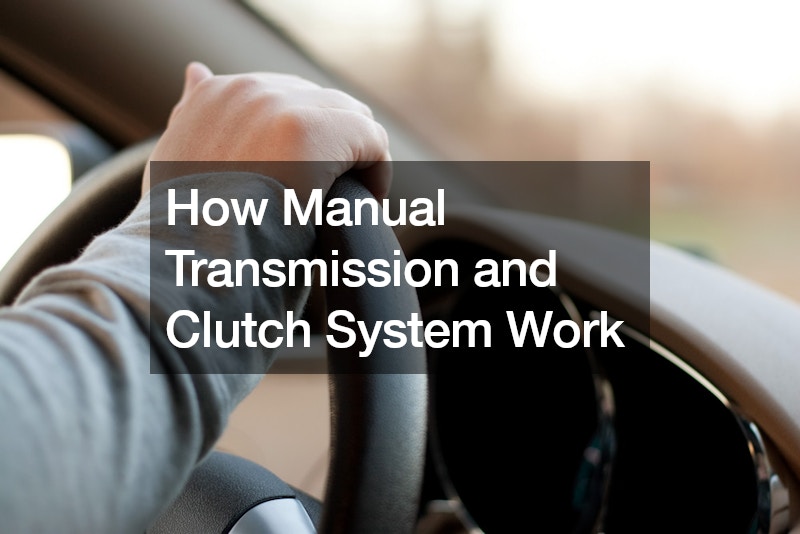In the realm of automotive engineering, manual transmission and clutch systems stand as essential components, facilitating the smooth operation and power delivery in vehicles. Despite the rise of automatic transmissions in modern cars, manual systems continue to hold significance in various applications, from vintage automobiles to high-performance vehicles. Let’s delve into the intricacies of how these systems operate and their role in the driving experience.
The Clutch Assembly: Power Transfer at the Core
At the heart of manual transmission systems lies the clutch assembly, a critical component responsible for transferring power from the engine to the transmission. Comprising several key elements, including the flywheel, clutch plate, pressure disc, and damping system, the clutch assembly ensures seamless engagement and disengagement of engine power.
The flywheel, firmly attached to the engine’s crankshaft, serves as the foundation for the clutch assembly. It maintains a constant rotational motion, synchronizing with the engine’s operation. Meanwhile, the clutch plate, also known as the friction disc, acts as the intermediary between the flywheel and the transmission input shaft. Positioned between the flywheel surface and the pressure disc, the clutch plate can slide back and forth, engaging or disengaging the transmission as needed.
As the driver depresses the clutch pedal, hydraulic mechanisms or mechanical linkages activate the clutch assembly, causing the pressure disc to press against the clutch plate. This action gradually connects the engine’s power to the transmission input shaft, enabling gear changes and vehicle movement.
Gears and Synchronization: Achieving Seamless Shifting
Within the manual transmission system, a series of gear sets facilitate different speeds and torque outputs, allowing for efficient power delivery to the wheels. These gear sets operate in constant mesh, with synchronizing mechanisms ensuring smooth transitions between gears.
During gear selection, synchronizer hubs and blocker rings work in tandem to synchronize the speeds of adjacent gears before engagement. This process, known as synchronization, prevents gear clash and ensures seamless shifting without excessive wear on the transmission components.
Shift Change Assembly: Orchestrating Gear Selection
The shift change assembly plays a pivotal role in translating driver input into gear selection. Comprising selector forks, rods, and the shift lever mechanism, it enables precise control over gear changes. When the driver moves the shift lever, the shift change assembly directs the movement of selector forks and rods, engaging the desired gear ratio.
Maintenance and Clutch Repair: Ensuring Longevity and Performance
As with any mechanical system, regular maintenance is crucial to preserving the functionality and longevity of manual transmission and clutch assemblies. Routine inspections of clutch components, including the clutch disc, pressure plate, and release bearing, can help identify signs of wear or damage early on. Additionally, proper lubrication and fluid levels within the transmission case are essential for smooth gear operation and reduced friction.
In the event of clutch malfunction or wear, timely clutch repair is imperative to prevent further damage and ensure safe vehicle operation. Professional technicians skilled in clutch repair can diagnose issues such as slipping, chatter, or difficulty shifting, and recommend appropriate repairs or replacements to restore optimal performance.
Common Issues and Maintenance Tips for Manual Transmission Systems
Manual transmission systems, while robust, can encounter certain issues over time. Understanding these common problems and adhering to proper maintenance practices can extend the lifespan of your transmission and ensure smooth operation.
One common issue with manual transmissions is clutch slippage. This occurs when the clutch disc fails to engage properly with the flywheel, leading to a loss of power transmission. Clutch slippage can be caused by worn clutch components or improper adjustment. Regular inspection of the clutch system and timely clutch repair or replacement can prevent this issue.
Another issue is gear shifting problems, such as difficulty in shifting gears or gear grinding. This can be caused by worn synchros, damaged shift forks, or low transmission fluid levels. Proper lubrication and periodic inspection of the transmission components can help mitigate these issues. Additionally, avoiding aggressive shifting and allowing the clutch to fully disengage before shifting can reduce wear on the transmission.
Leaks are another common issue in manual transmissions. Leaking transmission fluid can lead to lubrication issues, overheating, and component damage. It is essential to inspect the transmission for any signs of leaks regularly. Common leak points include the transmission seals, input shaft seal, and drain plug. Addressing leaks promptly and ensuring proper fluid levels can prevent costly damage to the transmission.
Regular transmission fluid changes are crucial for maintaining optimal performance and preventing premature wear. Over time, transmission fluid can break down, lose its lubricating properties, and become contaminated with debris. Follow the manufacturer’s recommendations for transmission fluid change intervals and use the recommended type of fluid for your vehicle.
Furthermore, proper driving habits play a significant role in the longevity of manual transmission systems. Avoiding excessive revving, aggressive driving, and riding the clutch can reduce wear on transmission components. Additionally, practicing smooth gear shifts and allowing the transmission to warm up properly in cold weather can minimize stress on the system.
By addressing common issues proactively and adhering to recommended maintenance practices, you can ensure the longevity and reliability of your manual transmission system.
Conclusion: The Mechanics Behind Manual Transmission Mastery
In conclusion, understanding the intricate workings of manual transmission and clutch systems provides insight into the fundamental principles of automotive engineering. From the coordination of clutch components to the synchronization of gear sets, each element plays a vital role in delivering power and facilitating seamless gear changes. By grasping these mechanics and prioritizing proper maintenance and clutch repair when necessary, drivers can optimize the performance and longevity of their vehicles, ensuring a smooth and enjoyable driving experience for years to come.
.


